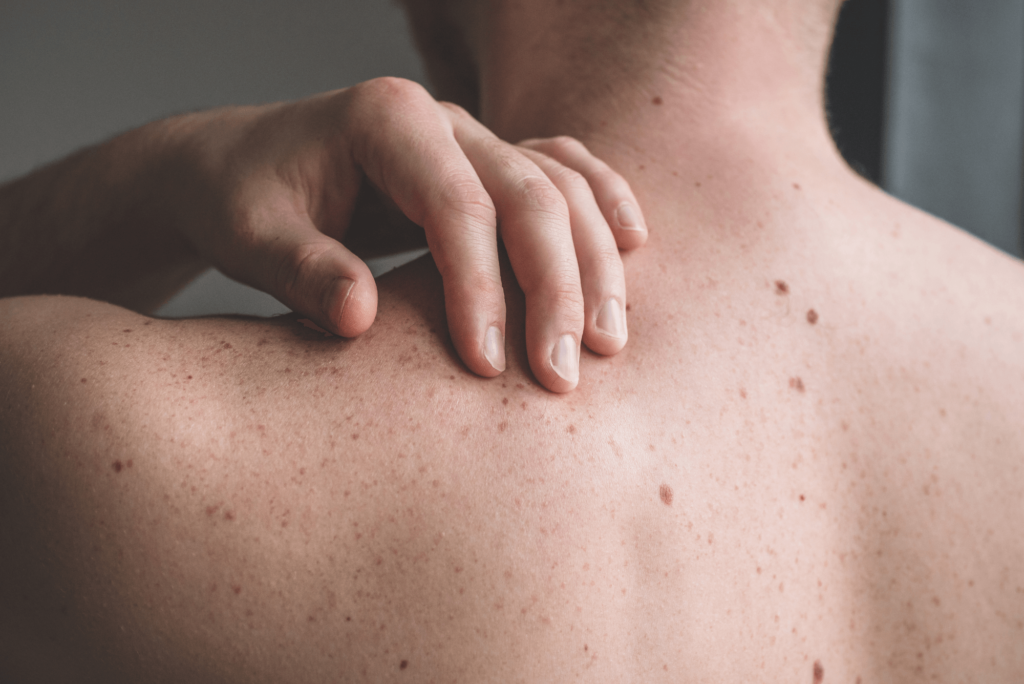Common Conditions that Cause Discoloration and Scarring
Two common dermatology concerns are skin discoloration and scarring. There are many conditions that can cause both discoloration and scarring. Sometimes these symptoms point to more serious conditions like skin cancer, while others are tied to aging or genetics. Learn more about the types of dermatology conditions that cause discoloration and scarring in the skin.
Melasma
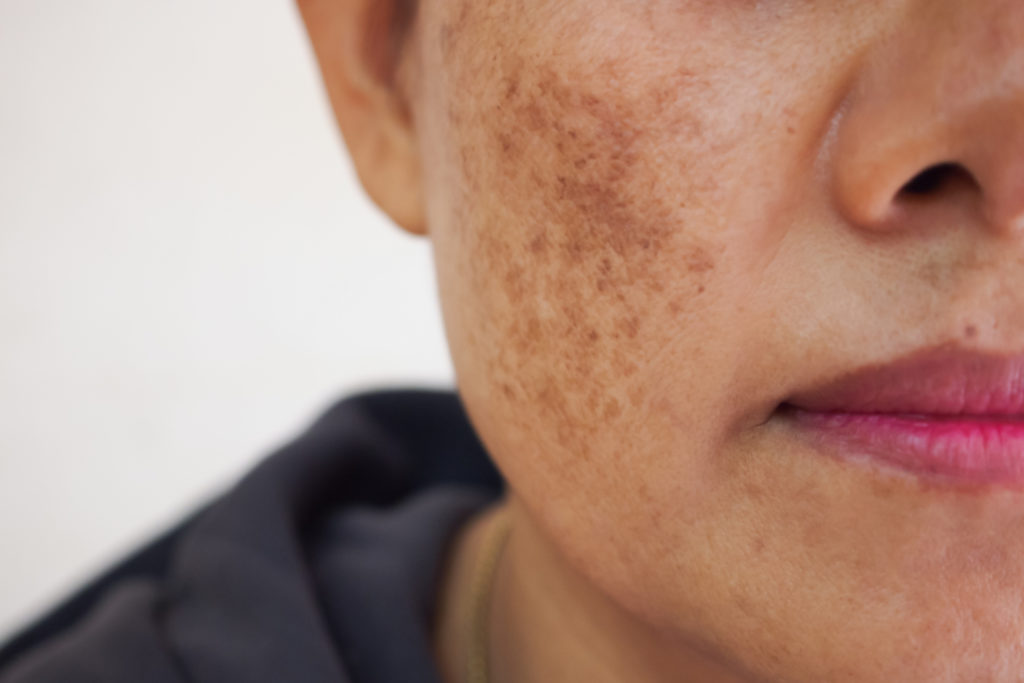
This condition occurs when patches of skin have an increased amount of pigment than surrounding areas. The result is splotches of dark discolorations and is most common on mid-facial areas including the nose, cheekbones, and forehead. Melasma can also occur on the arms.
Keeping a regular sunscreen routine will help your skin return to its normal tone. You should avoid over-using acidic skin cleansers as they can make the discoloration worse.
Poikiloderma
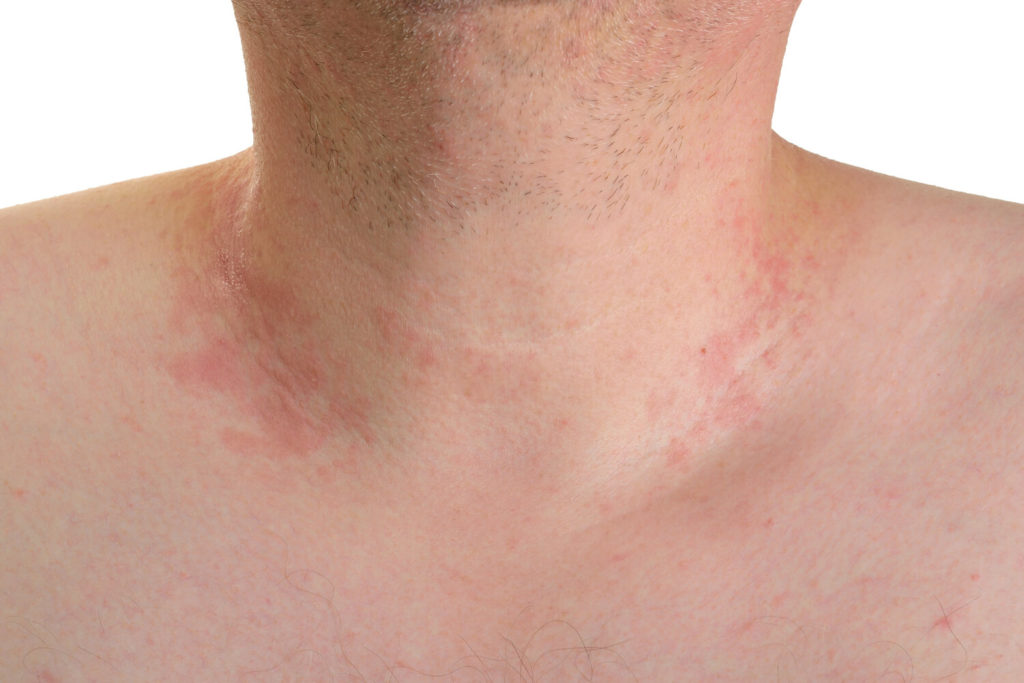
Discolored patches of darkened skin with a red undertone typically occuring around the thin skin on the neck. Sun damage is the main cause of poikiloderma. Extended periods of sun exposure cause the capillaries in the neck to widen, which causes the darkening of the skin.
As with melasma, protecting discolored spots with sunscreen will prevent further discoloration and help your skin repair itself. Retinoids and alpha hydroxy acids (AHAs) can help remove the discolored layers of skin, but this should be done with care in order to prevent further discoloration.
Acne Scarring
There are two types of acne scarring, those being hyperpigmentation and physical scarring. Getting rid of acne scars is often a big concern, and can also be challenging depending on the type of scar.
Hyperpigmentation
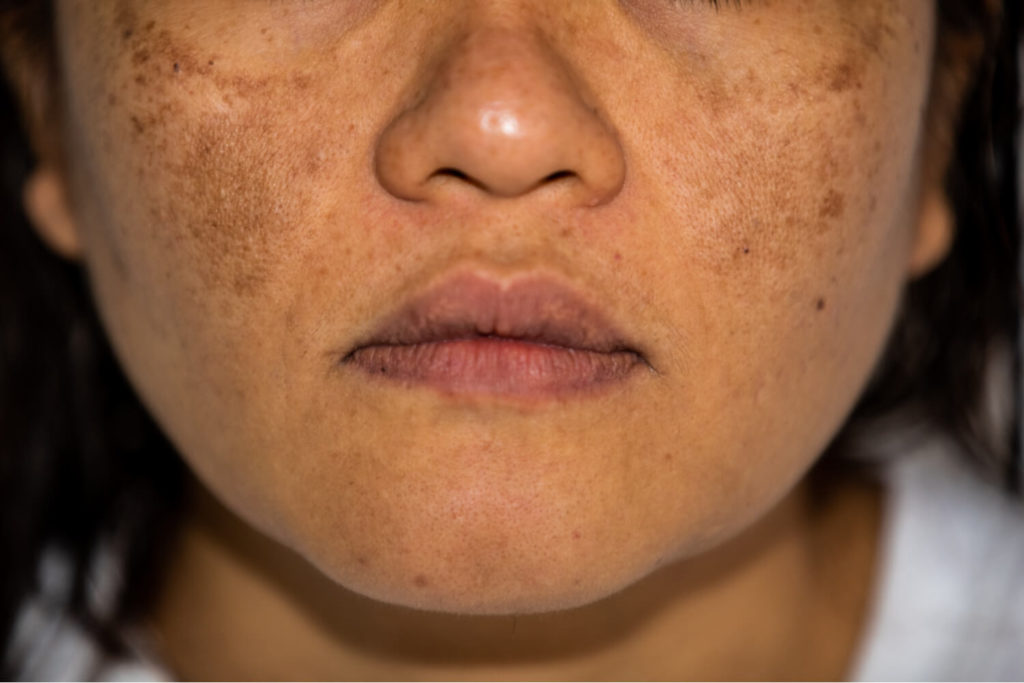
Within this category of acne scars there are two more subcategories. The first is post-inflammatory hyperpigmentation (PIH) and the second is post-inflammatory erythema (PIE). PIH leads to dark and discolored patches of skin due to overproduction of melanin, while PIE leads to pink or red spots of discoloration.
Treatment, as with melasma and poikiloderma, involves using topical products that include AHAs, retinoids, and even kojic acid. Working with a Tennessee dermatologist will help you address your symptoms while also preventing further discoloration.
Physical Scarring
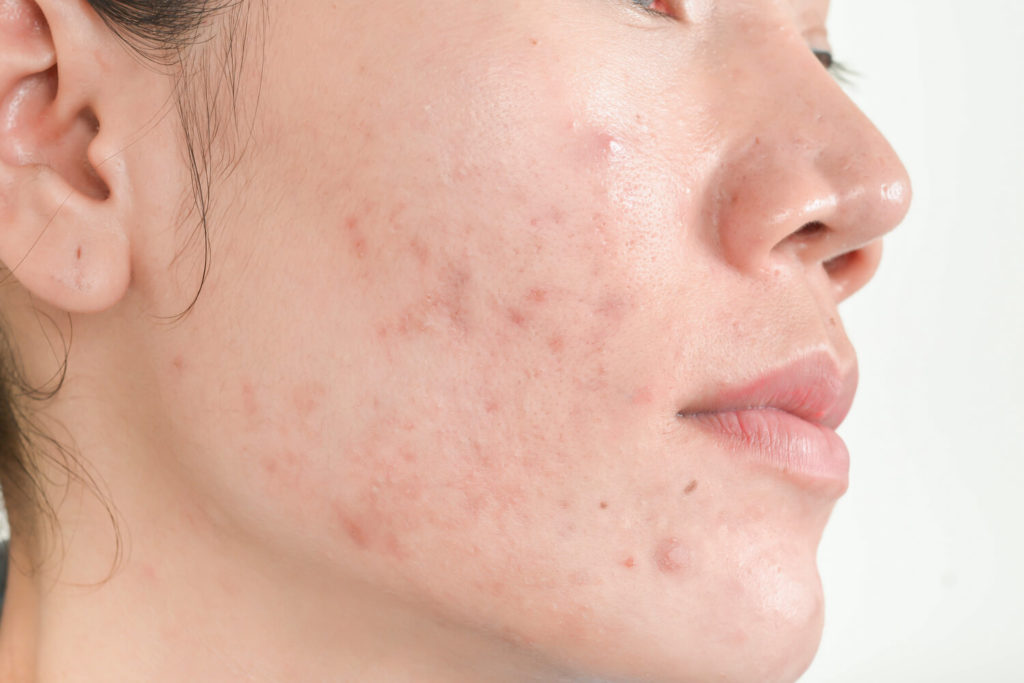
This type of acne scarring occurs in several forms, including ice pick scars, boxcar scars, and raised scars. These scars are much harder to treat as they are made from actual scar tissue or the loss of subcutaneous tissue. The number one way to prevent these scars is to not pick your pimples.
Raised acne scars develop due to collagen production, and are probably the easiest to treat with a topical product. Acids and exfoliants can slowly wear down and remove raised scars.
Learn More About Acne and Acne Treatment: Conditions – Acne
Sun Burns
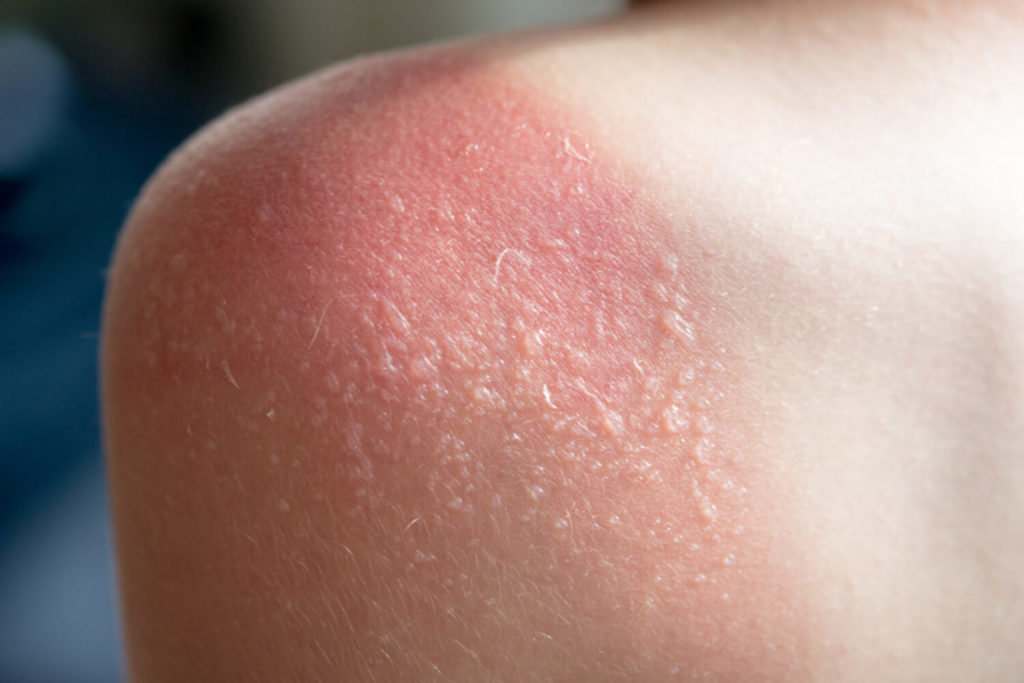
Staying out in the sun longer than fifteen minutes puts you at risk for sunburn. Sunburns also can vary in their severity but are most recognizable from hot red patches of skin that were exposed.
Usually, these are self-diagnosable and self-treatable. You can cool and soothe your skin with aloe vera, cool water compresses, calamine lotion, or an oral antihistamine. You should avoid peeling the skin so your body can heal itself naturally, and you should also avoid using heavy oil-based products that will make it harder for your skin to heal.
Related: The Importance of Using Sunscreen
Candida
Varied bacterial infections that usually occur in enclosed high friction areas of the body. The most common symptoms of a candida infection include itching and white lesions that ooze or become weepy and itchy.
Topically, these infections are easy to treat with antifungal products, but if left untreated, they can enter the body and become much harder to treat.
This is also the same genus of fungus that causes toenail fungus and athlete’s foot infections.
Rosacea
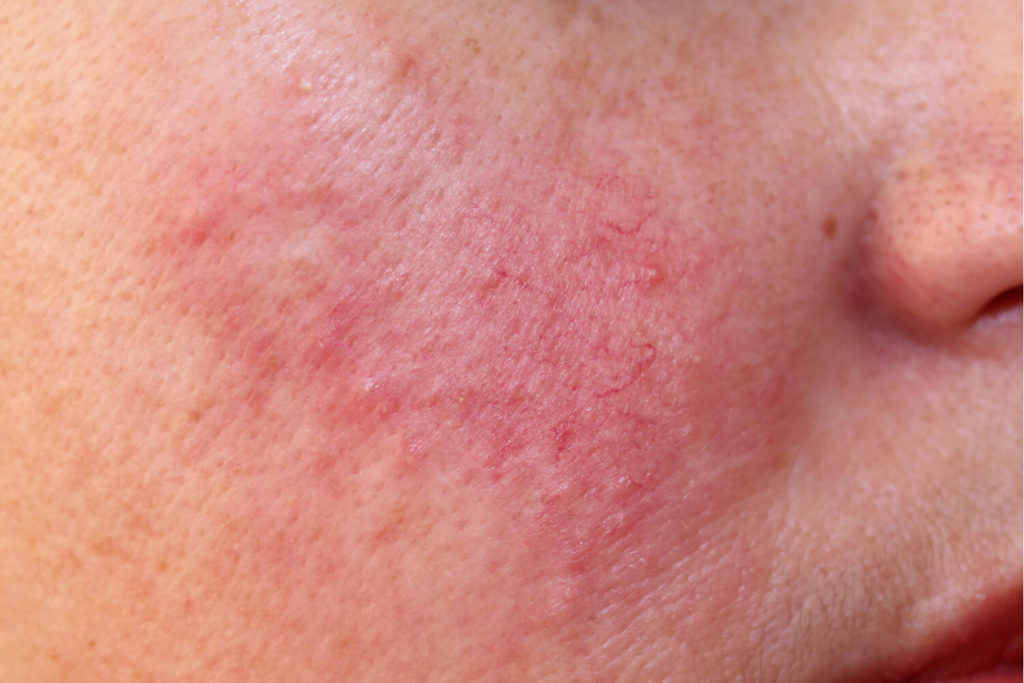
A chronic over pigmentation of the skin that leads to extreme redness. Rosacea is typically centralized in the midfacial region and does not present with comedones (blackheads and whiteheads). Instead, rosacea presents papules and pustules with red swollen bumps on the face.
Oral medication, topical therapies, and lifestyle changes are part of the typical treatments for rosacea.
Learn More About Rosacea On Our Conditions Page: Conditions – Rocacea
Burns
First Degree Burns
These minor burns only affect the outermost layer of the skin or the epidermis. Symptoms include pain and redness. Usually, these are self-diagnosable and self-treatable with cold compresses and anti-inflammatories like acetaminophen and ibuprofen.
Second Degree Burns
When a burn affects both the epidermis and the second layer of skin (the dermis), it becomes a second-degree burn. Symptoms of second-degree burns include pain, redness, swelling, blistering of the skin, as well as scared splotchy skin.
Third Degree Burns
These are considered medical emergencies and should be taken care of immediately. Third-degree burns destroy both the epidermis and the dermis, as well as the subcutaneous fat tissue and nerve endings. Symptoms include redness, possible charred edges, and dark leathery patches of skin.
Tinea Versicolor
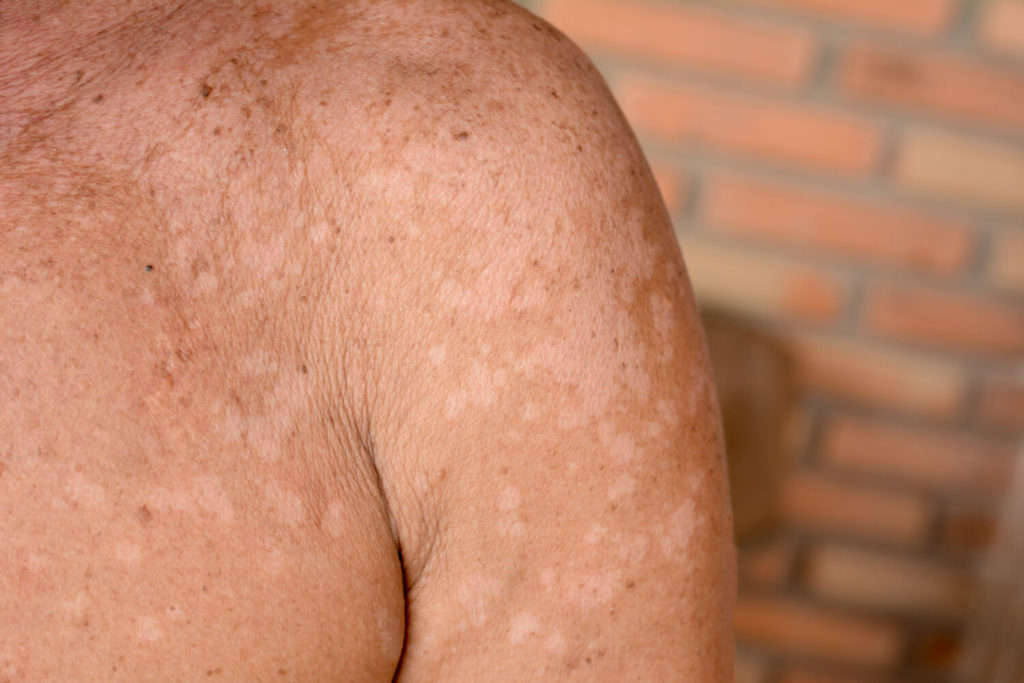
Also known as pityriasis Versicolor, this condition is a fungal infection involving the Malassezia furfur family. It occurs most often in tropical climates, so you shouldn’t have to worry too much here in Tennessee, still, you can run into it if you’re traveling to a tropical climate for a vacation. Typically, topical antifungal prescriptions are enough to resolve symptoms.
Contact Dermatitis
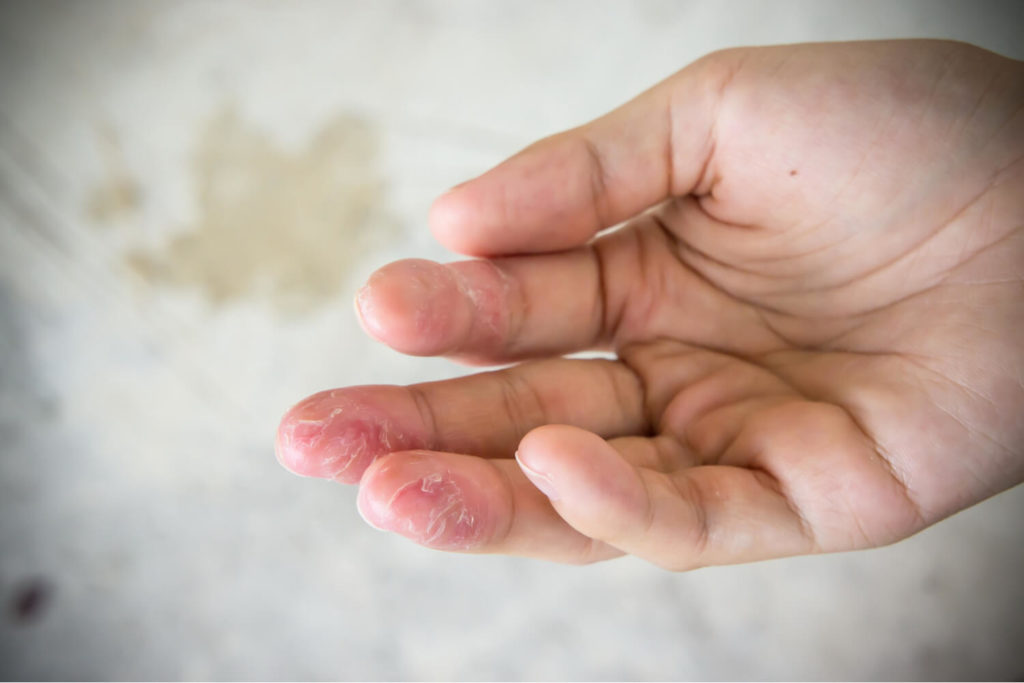
Put simply, contact dermatitis is a rash that can develop anywhere on your body. There are several symptoms of contact dermatitis including:
- Blisters
- Itching and scaly skin
- Burning sensations
- Swelling
Contact dermatitis is caused by either irritant, allergic reactions, or sun exposure. Removing the irritants from your environment, like latex gloves, for example, will let the rash start to heal. At home, you can clean your skin with warm water and mild soap to remove any additional irritants and prevent further infections.
Antihistamines, hydrocortisone cream, and calamine lotion can reduce redness, swelling, and itchiness. You should also avoid scratching your skin to prevent infections. And you can create a physical barrier over the rash by applying vaseline or petroleum jelly.
Eczema
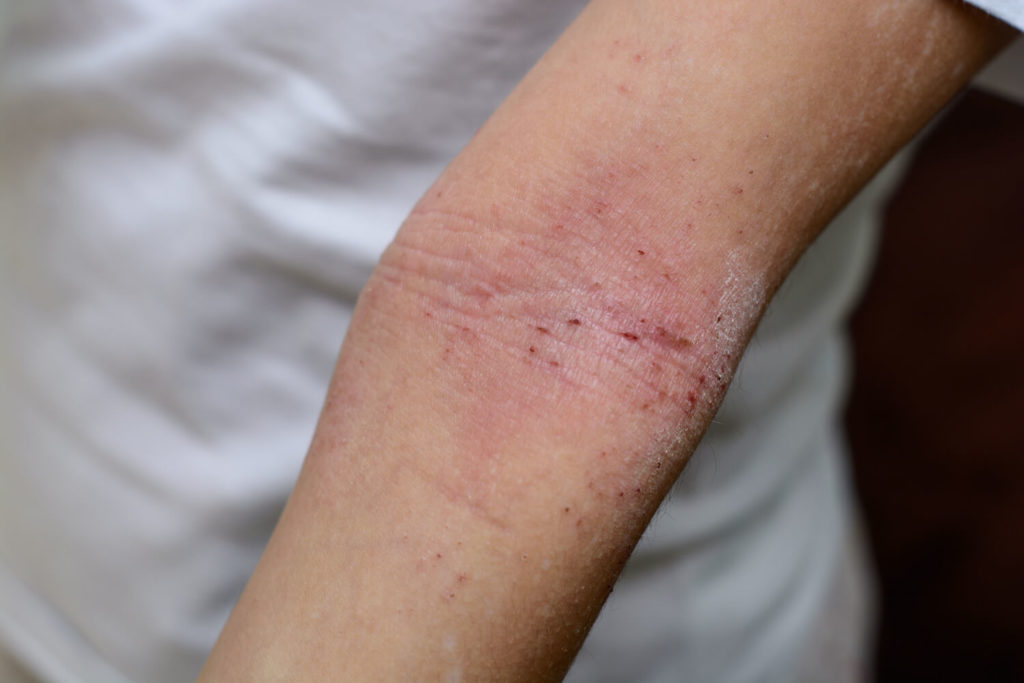
Also known as dermatitis, eczema refers to a collection of skin conditions that cause itching and swelling. Eczema rashes can also make the skin dry, scaly, and inflamed. We’re still not quite sure what exactly causes eczema, as flare-ups can be due to stress, environmental irritants, genetics, pollen, chemicals, soap, fabrics, and animals.
Through our online dermatology appointments, we can diagnose your eczema, create a customized treatment plan, and adjust through convenient follow-up appointments.
Learn More About Eczema Treatment With Tennessee Telederm: Conditions – Eczema
Vitiligo
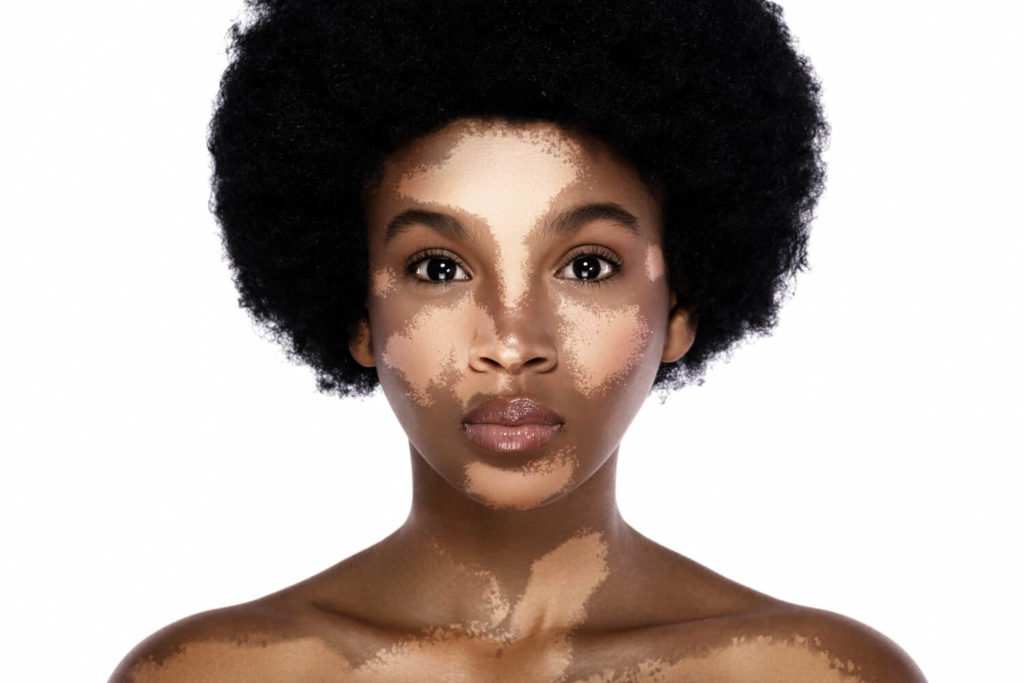
Pronounced “vit-ih-LIE-go,” is a condition that causes discoloration of the skin. It can occur anywhere on the body but is typically most noticeable on the hands and face. This kind of discoloration occurs when the cells that produce melanin stop working. Melanin is the pigment that gives skin its natural color, so without a steady supply of melanin, the discolored patches will grow with time.
Vitiligo can be treated with anti-inflammatory medications and with topical calcineurin inhibitor ointments that affect the immune system. Keep in mind that no treatment will permanently stop the advancement of vitiligo, but treatment can help restore some of your skin’s natural skin tone.
Stasis Ulcers
Venous insufficiency occurs when the body’s circulatory system cannot pump blood effectively ro every area of the body. When blood flow to and from the lower legs becomes slow, the deoxygenated blood pools in the legs and forces fluid to leak out from the veins and rise into the skin tissue. The fluid forms into blisters and ulcers that become weepy and take a very long time to heal.
In order to treat the root cause of venous leg ulcers, you will need to visit a vascular surgeon in order for your ulcers to truly heal. However, a Tennessee dermatologist or dermatology professional can diagnose and treat stasis ulcers as you seek further treatment.
Actinic Keratosis
These common skin lesions present as patches of rough, reddish, scaly skin. Actinic keratoses appear most frequently on parts of your body that are regularly exposed to natural sunlight, such as the hands, face, neck, ears, and chest.
The scary thing about actinic keratoses is that they are a precursor for squamous cell carcinoma. Therefore, if you are worried about possible keratoses, then you should get it examined by a board-certified dermatologist or a licensed dermatology nurse practitioner.
There are several treatments that can remove keratoses, but many require in-office treatments. With Tennessee Telederm, we can prescribe topical treatments as an initial treatment for actinic keratosis.
Skin Cancers
Basal Cell Carcinoma
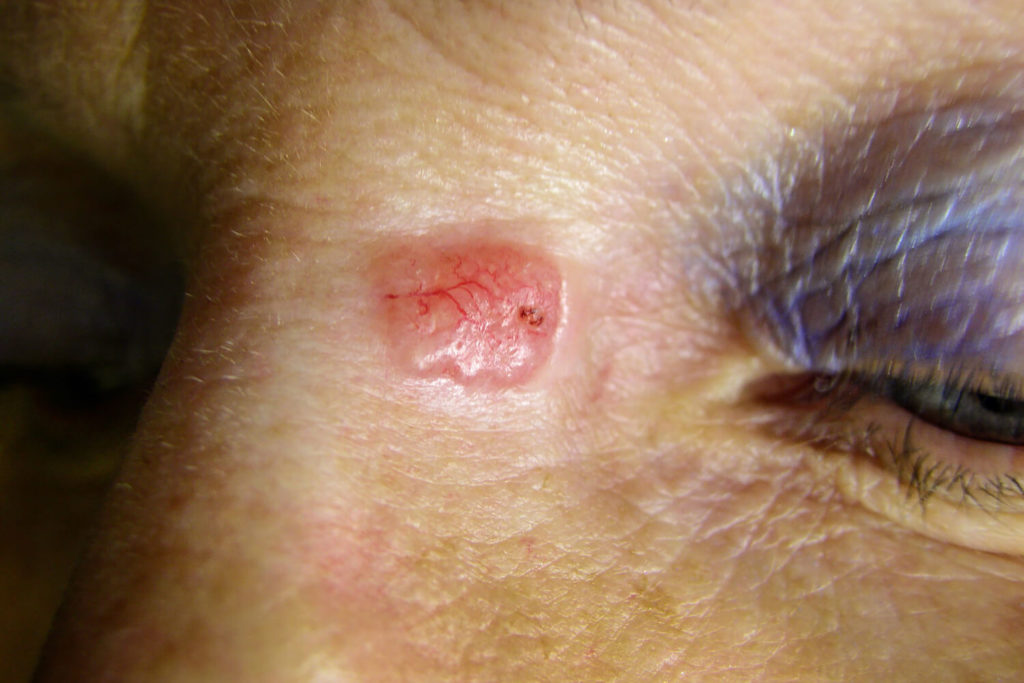
As the most common form of skin cancer, basal cell carcinoma is highly treatable and easy to detect. They also have a low chance of spreading into internal organs and to other areas of the body.
- Signs of basal cell carcinoma include:
- Sores or ulcers that won’t heal
- Small red patches of skin that become crusty, itchy, or hurt
- Shiny bumps that are discolored or pearly
- Small pinkish bumps or growths with a rolled edge
- Scars with abnormal colors, edges, or textures
While you shouldn’t self-diagnose, knowing what to look for will help you know when to talk to a derm expert so you can minimize the severity of your skin cancer.
Squamous Cell Carcinoma
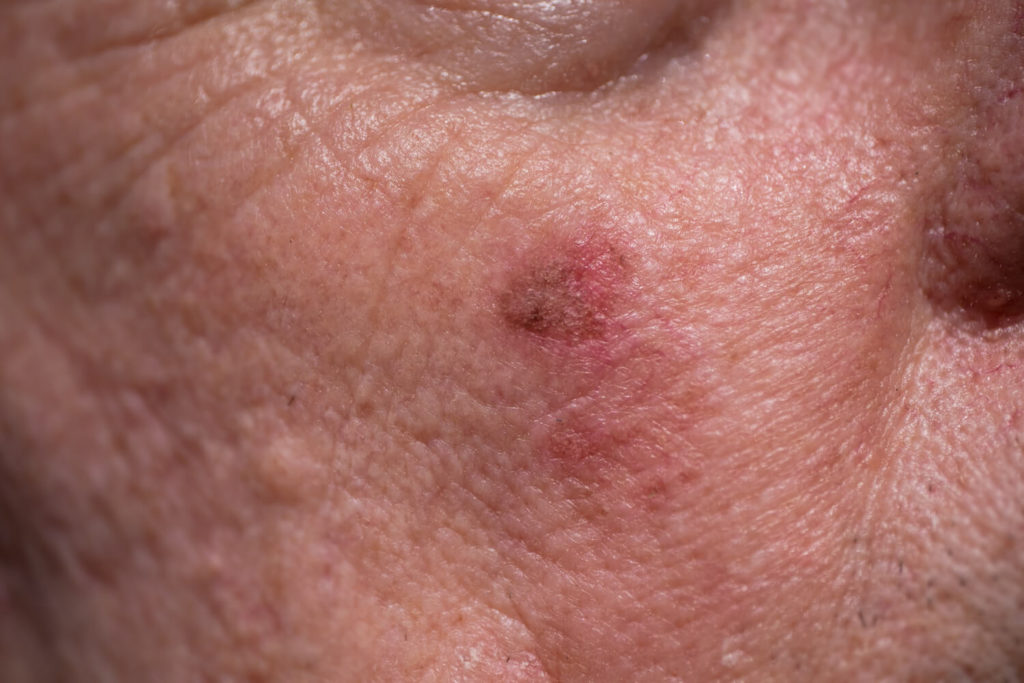
This is the second most common type of skin cancer and is also more aggressive than basal cell carcinoma. Symptoms include thickened skin, wart-like lesions, raised skin growths with a middle depression, open sores, and rough red scaly skin.
Melanoma
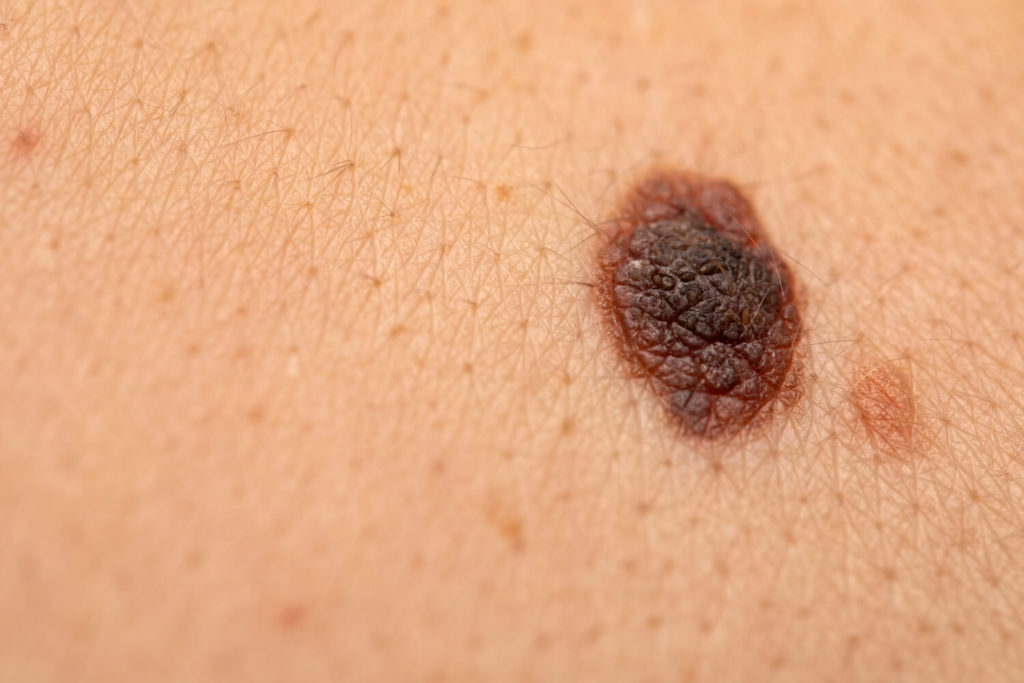
The most aggressive and dangerous type of skin cancer, melanoma can easily spread to other areas of the body. The most common symptom is a sudden skin growth that is discolored, misshapen, asymmetrical or continues evolving. If you notice any moles that you’re worried about, you should schedule a skin cancer screening as soon as possible. The earlier melanoma is detected, the better your chances will be.
Book Your Skin Consultation with TN Telederm
Tennessee Telederm offers affordable online dermatology appointments for anyone anywhere in Tennessee. If you’re concerned about a skin, hair, or nail condition you don’t have to visit a physical doctor’s office anymore. Through our web-based appointments, you can save time and money and schedule appointments at a time that works best for you.



